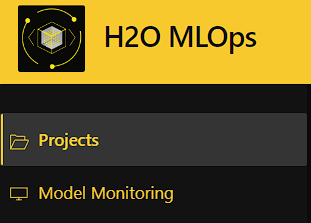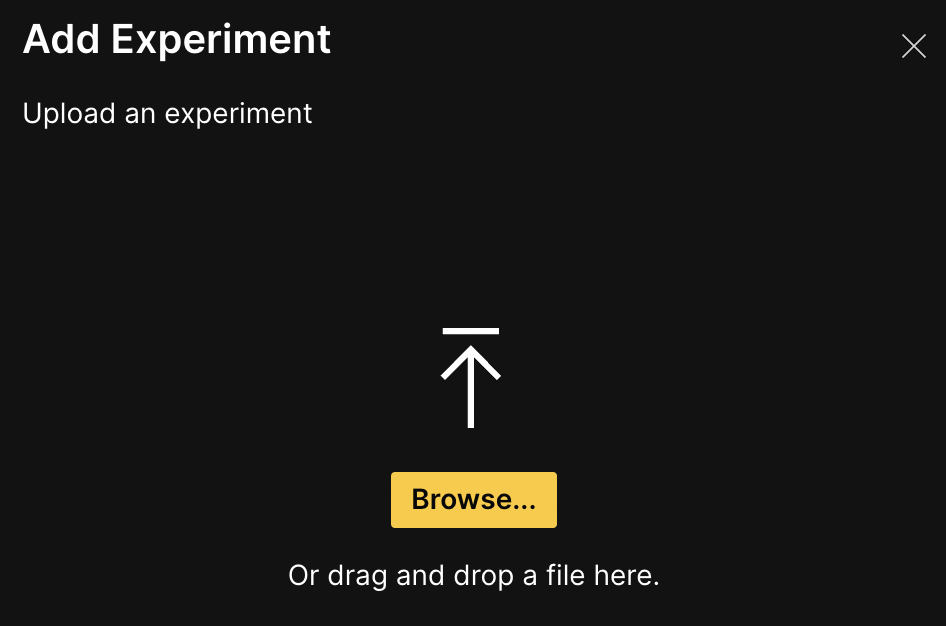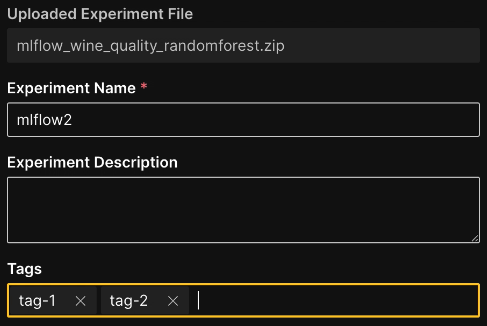Add experiments
The following steps describe how to add an experiment to an MLOps project.
- In the main navigation, click Projects.

-
Select the project you want to add an experiment to.
-
Click the Experiments tab, and then click Add Experiment.

- Click Browse to select a file to upload from your local file system. You can also drag a file onto the page to upload it to MLOps. Supported file types include Driverless AI MOJOs, H2O-3 open source MOJOs, and MLflow Models. To confirm your selection, click Upload.

- After the experiment has been uploaded, enter a name and description for the experiment. You can also add tags to the experiment. (Note: Experiment tags must be created from the Settings tab on the project page. For information on how to create experiment tags within your project, see Project page tabs.)

- Click the Add Experiment button to finish adding the experiment.
Add MLflow artifacts for third-party frameworks
MLflow artifacts should also be submitted as zip files, similar to other experiments. For more information, see Create MLflow artifacts for third-party frameworks.
Export experiments from H2O Driverless AI to MLOps
The following steps describe how to export an experiment from H2O Driverless AI to MLOps.
This section assumes that you have completed experiments available in Driverless AI to export into MLOps. For information on how to run an experiment, refer to the section on running experiments in the Driverless AI user guide.
-
In Driverless AI, navigate to the Projects page. This page lists all available projects.
-
Select a project and link an experiment to it by clicking the Link Experiment button. For more information, see the page on linking experiments in the Driverless AI user guide.
-
In H2O MLOps, verify that the experiment was successfully exported.
- Submit and view feedback for this page
- Send feedback about H2O MLOps to cloud-feedback@h2o.ai